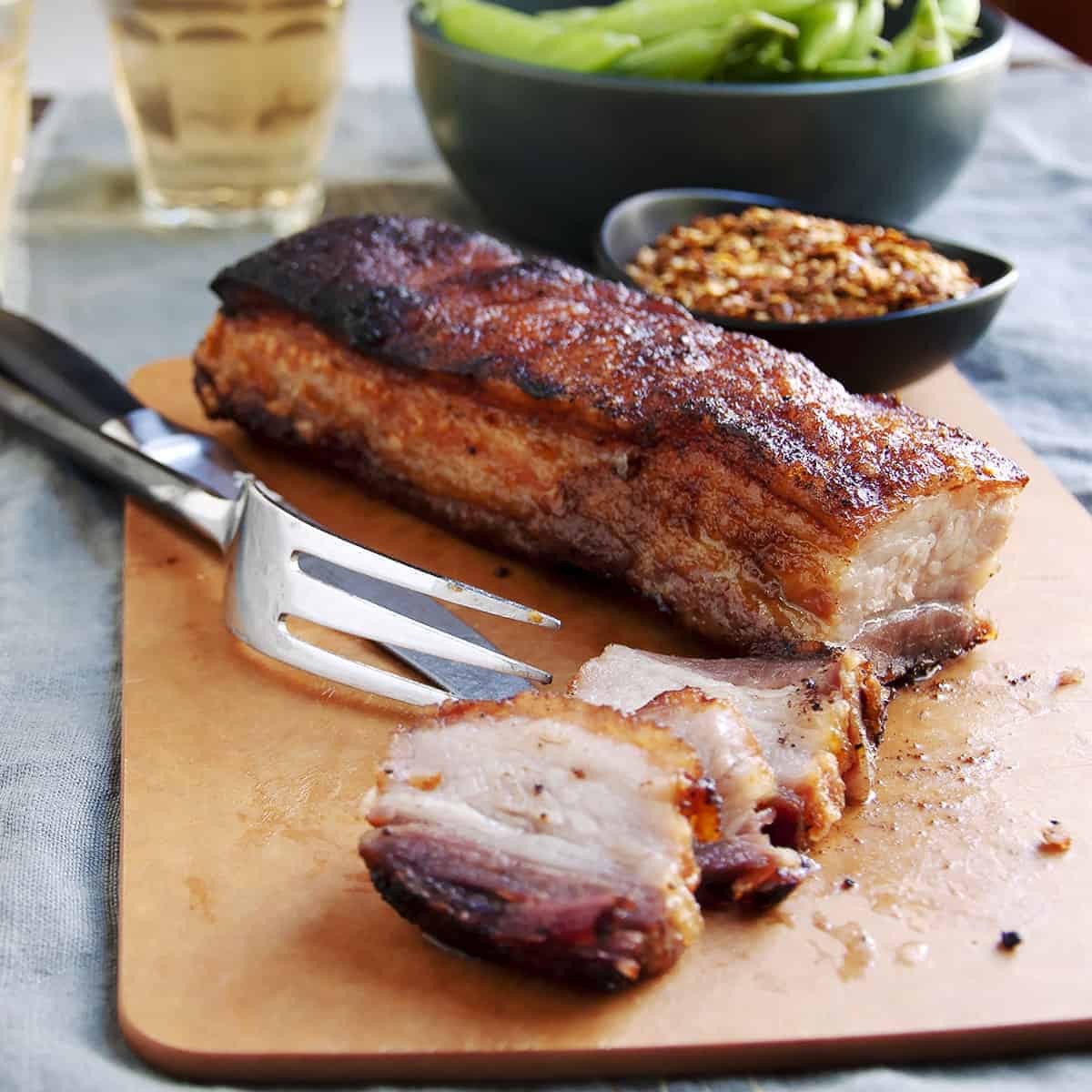Discover the Joys of Cooking Pork Belly for Your Family
Hey there, wonderful parents! Are you ready to take on a succulent and flavorful adventure in your very own kitchen? Cooking pork belly can be a delightful experience that appeals to all ages, and we’re here to guide you through every sizzle and sear. In this comprehensive guide, you’ll find practical tips, insightful techniques, and mouth-watering recipes guaranteed to win over even the pickiest of eaters.
What Is Pork Belly and Why Your Family Will Love It
Pork belly is the sumptuously fatty cut from the belly of a pig. When cooked correctly, it has a divine balance of meat and fat, resulting in a tender, juicy, and flavorful dish. It’s the same cut used to make bacon, but when left uncured and unsliced, it presents a whole new world of culinary wonders.
Parents, rest assured, introducing pork belly into your family meals is a fantastic idea because it’s not only delicious but versatile. Whether it’s slow-roasted, braised, or crisped up in a pan, pork belly can adapt to a variety of cuisines and flavors, making it a hit with kids and grown-ups alike.
Choosing the Perfect Pork Belly for Your Family Meals
Picking the right piece of pork belly is crucial for the perfect meal. Here’s what you need to look for:
- Quality: Aim to get your hands on the freshest, highest quality pork belly. Free-range or organic options can really make a difference in taste and quality.
- Size: Consider the size of your family and the meal you’re planning. A good rule of thumb is about 1/2 pound per person if the pork belly is the main attraction.
- Thickness: Even thickness means even cooking, so try to choose a piece that is consistent from end to end.
Note: Don’t shy away from chatting with your local butcher—they can offer valuable insight and might even trim the piece to your liking.
Prepping the Pork Belly for a Family Feast
Preparation is key to unlocking the magic of pork belly. Here’s how to get started:
- Scoring: Start by scoring the skin. Make shallow cuts across the surface—this helps the fat render more easily and creates deliciously crispy skin.
- Seasoning: Generous seasoning is your friend. Use a mix of salt, pepper, and your favorite herbs or spices. For a family-friendly twist, try a simple rub of brown sugar, smoked paprika, and a touch of cinnamon to captivate your little ones’ taste buds.
- Resting: Let the seasoned pork belly rest in the fridge for a few hours, or even overnight. This step is crucial for flavor development, so don’t skip it!
Remember, safety first! Always wash your hands thoroughly after handling raw pork, and clean any surfaces or utensils to prevent cross-contamination.
Cooking Methods to Make Pork Belly a Star on Your Dining Table
There are several ways to cook pork belly, each bringing out its unique characteristics. Here’s a quick rundown:
- Oven Roasting: Slow-roasting in the oven makes the pork belly incredibly tender inside, with a crispy exterior. It’s a mostly hands-off method, so you can spend more time with the family while dinner’s cooking.
- Braising: Braising pork belly in flavorful liquids like broth, cider, or a combination of soy sauce and sugar can infuse it with amazing flavors. It’s a great way to experiment with different cuisines and tastes.
- Pan Frying: For a quicker option, pan-frying slices of pork belly yields a delightful crust and can be done in under 30 minutes. Perfect for those busy weeknights!
We have barely scratched the surface of cooking pork belly! In the next section, we’ll dive deeper into each cooking method. We’ll also share some irresistible recipes that are sure to become family favorites. So preheat those ovens, get those pans ready, and stay tuned for more tips and tricks!

5 Essential Tips for Parents Preparing Pork Belly
Before we delve deeper into the delectable world of pork belly, here are five essential things every parent should know about preparing this treat:
- Patience Pays Off: Pork belly is a cut of meat that thrives with slow cooking. Rushing the process can lead to tough meat, so remember, good things come to those who wait!
- Control the Heat: Whether you’re roasting, braising, or frying, maintaining the right temperature is critical. For roasting, a lower heat allows the fat to render without burning the skin, while controlled, moderate heat is essential for even frying.
- Invest in a Good Thermometer: To ensure your pork belly is cooked to perfection, use a meat thermometer. The safe internal pork cooking temperature is 145°F, but for tender pork belly, you may go a little higher.
- Get Creative with Leftovers: Pork belly is just as fabulous the next day. Chopped into stews, stirred into fried rice, or made into sandwiches, the possibilities are endless and oh-so-delicious!
- Involve the Kids: Cooking is a fantastic learning experience for children, so involve them in safe kitchen activities. They can help with measuring spices for the rub or watch the transformation during cooking (with supervision, of course).
Deeper Dive: Mastering Pork Belly Cooking Methods
Now that you’ve got your prep down, let’s explore those cooking methods in more detail, shall we?
Oven Roasting Perfection
Oven roasting is a magical process that is both incredibly simple and rewarding:
- Preheat: Set your oven for 350°F. Preheating is a must!
- Roast: Place your prepared pork belly in a roasting pan. Cook until the meat is tender and the skin is crispy, which may take around 2 to 3 hours depending on size.
- Broil: To finish, set the oven to broil for the last few minutes, watching carefully to avoid burning. This final touch will give you that wonderful crackling skin.
Braised Belly Bliss
Braising combines low, slow cooking with moist heat. Try this basic method:
- Brown: Sear the pork belly pieces in a hot pot to develop flavor.
- Braise: Cover with liquid (broth, wine, or a mix), add aromatics like garlic, onion, and herbs, then simmer gently until fork-tender, often for several hours.
- Reduce: After the pork is cooked, the remaining liquid can be reduced to a mouth-watering glaze or sauce.
Pan Frying – Quick and Crispy
If you’re short on time, pan-frying is your go-to:
- Slice: Cut your pork belly into bite-sized pieces or strips.
- Fry: Cook in a hot, non-stick pan, turning occasionally until each piece is evenly browned and deliciously crispy.
- Drain: Let excess fat drain off by resting fried pieces on a paper towel.
Each cooking method has its own charm and is suited to different kinds of meals. Weekend dinners might call for a slow-roasted centerpiece, while a quick pan-fry could be a midweek lifesaver. There’s no right or wrong way to enjoy pork belly—it’s all about what works for your family!
Family-Friendly Pork Belly Recipes to Wow Your Table
Ready to put theory into practice? Here are some family-approved recipes that are as fun to make as they are to eat:
- Classic Roast Pork Belly: Seasoned with just salt and pepper, then roasted until tender. Serve with applesauce and fluffy mashed potatoes for a meal your kids will crave.
- Asian-Inspired Braised Pork Belly: Braised in a mixture of soy sauce, star anise, ginger, and rock sugar—this dish is a gateway to the flavors of the East.
- Spicy Pork Belly Tacos: Pan-fried, then tossed with your favorite taco seasoning. Load up tortillas and let the family garnish with an array of toppings—sour cream, cheese, and guacamole, for a tasty interactive meal.
Remember, cooking should be fun, so feel free to experiment and tweak these recipes to your family’s taste. The kitchen is not just a place to prepare food; it’s a place to create memories and share love. Enjoy the process, and relish in the scrumptious results! Happy cooking!
For more great articles please see here. For more information see here
Disclaimer
The articles available via our website provide general information only and we strongly urge readers to exercise caution and conduct their own thorough research and fact-checking. The information presented should not be taken as absolute truth, and, to the maximum extent permitted by law, we will not be held liable for any inaccuracies or errors in the content. It is essential for individuals to independently verify and validate the information before making any decisions or taking any actions based on the articles.




